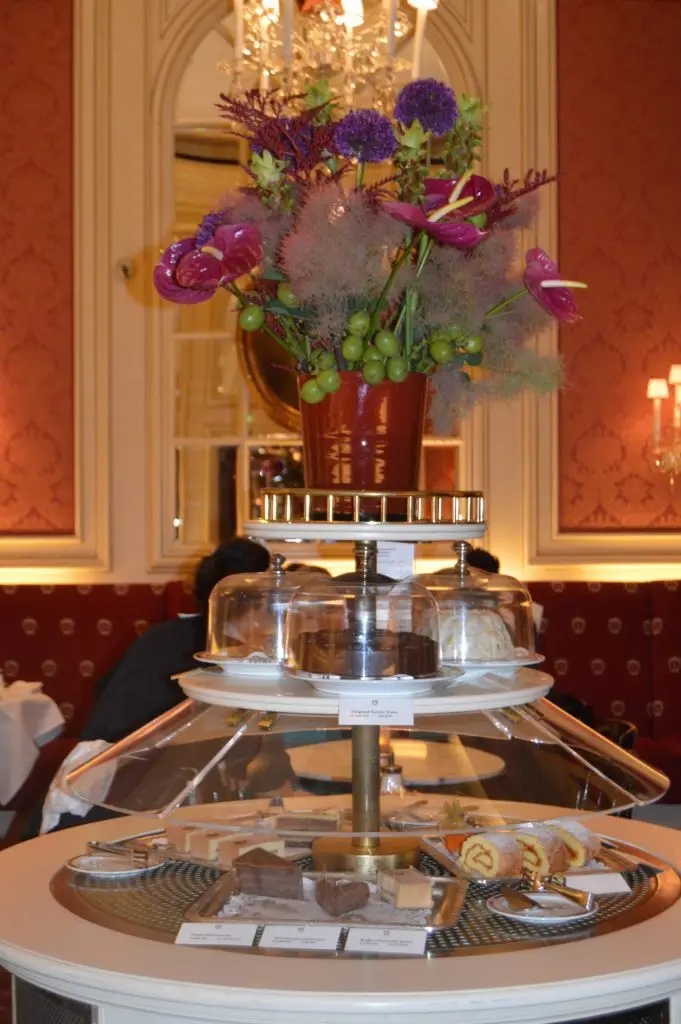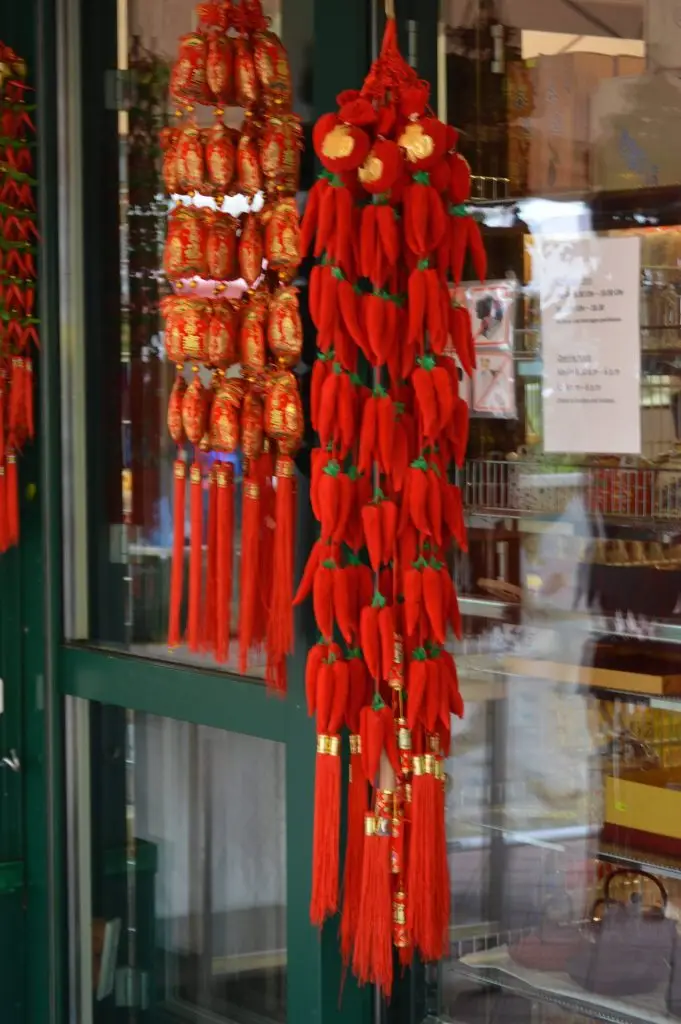I know, I know…Vienna has always been a cosmopolitan city. But we approached it as a dessert capital – a singular exemplar; a province of old-world excellence. If other discoveries awaited us in this city, we didn’t care. While Vienna delivered on its culinary promise, we could not ignore how it asserted itself as a contemporary center of globalism.
The Sachertorte is the most famous cake in the world. We found it at the elegant Hotel Sacher in central Vienna, itself a luxury icon generated by the fame and fortune of this little cake. Those of you who have met the Sacher know that it is a simple, richly-coated chocolate cake with a layer of apricot jam inside served with a dollop of “schlag” (unsweetened whipped cream). It is surprisingly dry, soft, only faintly sweet. I’ve known the Sacher for many years, and I’ve never put it on my list of favorites.
Too dry for me; too dense. This made me worry that my taste had become too American – too skewed by sweetness, layers and fluff. But after only a few hours in Vienna, I learned that my taste was restrained by Viennese standards. The Hotel Sacher proudly displays desserts with serious sweetness; stacked, handsome layers and fluffy cream to spare. But the Sachertorte has none of these attributes. It is stubbornly small at only 2 layers, its crumb is a determinedly dry yet soft with chocolate density, and its real character comes from the tart sweetness of the apricots and a chocolate glaze. The original recipe is a hotly-contested, carefully guarded secret. Many tourists in Vienna flock to the cafe to experience this cake.
Vienna’s other classics (apple strudel, iced gugelhof) keep the Sacher company and here’s how they look.

But mid-way through this sophisticated experience, I got twitchy. Even while smitten with the sense of arrival and the long-awaited fork puncture into the Sachertorte on its home turf, my attention wandered. It’s too DRY. My students referred to it as a hockey puck and I couldn’t get the apt comparison out of my mind. It’s not much better than the ones we used to make in culinary school and they were all the way to bad. BUT. Consider chocolate. At the time Joseph Sacher made his tortes in the 1830’s, chocolate was still a luxury. No cocoa powder in the grocery store. No candy bars at the checkout line. No chocolate anywhere but in a few pastry shops like Mr. Sacher’s. So I set my mind to imagining that this was the only chocolate I had tasted this year. What if this was my only access to the dark stuff? In that case, one slice might not be enough. I’d order another and a champagne to go with.
The next day we cruised the Naschtmarket with a very different mission than the cake hunt: Bratwurst. We imagined them hanging from wood-frame stalls in this semi-covered market from the 16th century. Our friend grew up in Vienna and told stories about using this market as a playground and hiding in stalls with ropes of brat swinging in all directions. But this we did not see. No kids and very few brats.
Instead we found a thriving, international market with dynamic flavors: salted peppers stuffed with feta cheese, exotic fruits, caramels, barkers peddling baklava and nut pastes – aggressively, and with humor – seafood restaurants, tapestries from northern Africa, keychains from Jamaica, juice bars, silver, flowers, local cheeses and colorful cakes. This was a dream market for me – full of history yet free to evolve into something contemporary, global and surprising. Deep down an alleyway, we found a few brats to eat for lunch with spicy mustard and white bread – our mission was complete. Soon we had our bags of caramels, tins of peppers forced on us by the barkers, nutty candies, Asian trinkets and souvenir kitchen magnets. This was happiness for me, pure, simple and diverse.
Did you know a market trend is upon us? Here are links to Forbes, CNN, Huffington Post, Food & Wine, NPR and Zagat, all of whom report on the changing nature of urban markets. Demand for central, health-conscious, international and local foods is an official trend and I, reporting from Vienna, approve.











